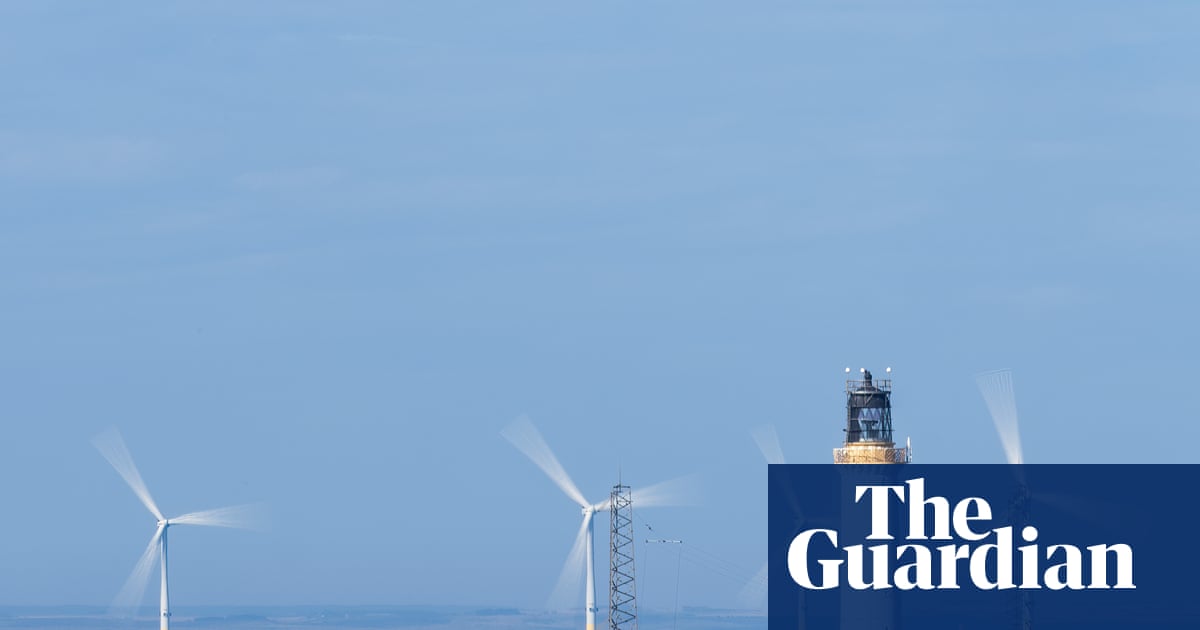Offshore windfarm companies may be exempted from new nature rules in an attempt to keep the cost of renewable energy down, the Guardian has learned.
The energy firms have said they would be unable to build the vast number of turbines required to meet the government’s green electricity goals if they have to meet new rules for nationally significant infrastructure projects (Nsips).
The energy secretary, Ed Miliband, is trying to find ways to reduce the cost of building offshore wind projects to avoid a hike in energy bills, according to sources in his department. Inflation and labour and materials costs are making it expensive to build the projects, while the grid upgrade required to carry the extra electricity is also adding to costs.
Under new planning rules from the Department for Environment, Food and Rural Affairs (Defra)expected to be brought in May, all Nsips such as nuclear power plants, airports and road schemes will have to enhance nature when new projects are built, or when existing infrastructure is expanded. Under the biodiversity net gain (BNG) requirement, they will be required to create 10% more nature than was there before the project was started, whether by planting trees or wildflower meadows or creating wetlands. The additions will not necessarily have to be in the same location as the development.
The rules were supposed to be published last week after a consultation, but the announcement has been delayed after a last-minute loophole was added for offshore windfarms to make them exempt from BNG rules, sources say. The turbines will not have to compensate for habitat destroyed in the shallow intertidal waters in which they are built, which include prime feeding spots for seabirds such as puffins, where the fish they feed on spawn.
A government spokesperson said wind projects would pay into a marine recovery fund to offset some of the damage they cause to the natural environment.
“We are consulting on how we will apply BNG for nationally significant infrastructure projects to provide consistent regulations for developers,” they said. “No decisions have been made yet. We are currently analysing responses to the consultation and will publish a government response in due course.”
In a submission to the consultation, the industry group RenewableUK said: “It is essential that mandatory BNG does not create an imbalance of priorities, discouraging renewable project developments that contribute to climate change mitigation” and that there were fears it could add “disproportionate costs or legislative challenges to renewable energy infrastructure developments”.
The Guardian recently revealed that the government’s clean power 2030 target could be missed if it becomes too expensive. Miliband is about to launch the auction to buy renewable energy power, and will set a guaranteed price which will be paid to energy companies per megawatt hour. If the auction secures a lot of energy at long-term expensive prices, Miliband’s promise to lower energy bills by £300 this parliament could be in jeopardy.
Windfarms can harm seabirds and marine mammals in the shallow waters and intertidal areas where they are located. The Berwick Bank windfarm in Scotland, for example, is predicted to kill 2,808 guillemots, 814 kittiwakes, 260 gannets, 154 razorbills and 65 puffins in its first year of operation, according to an analysis by the Scottish government. The number of birds killed by turbines, however, is tiny compared with those killed by domestic cats and from flying into power lines.
The plan to exclude offshore windfarms from BNG rules also comes as the government is declining to ban destructive bottom trawling in marine protected areas.
after newsletter promotion
The chief executive of Wildlife and Countryside Link, Richard Benwell, said: “Abandoning marine net gain would be a short-sighted decision which wrongly trades off nature protection and climate action. We must accelerate renewable delivery, but it mustn’t come at a cost of puffins, destroyed oyster beds and dolphins prevented from finding food.
“Industry data shows environmental assessments are a tiny fraction of the cost of developing offshore windfarms. We need to restore our oceans and deliver offshore wind, not pursue false quick fixes based on cutting protections for nature.”
Windfarms will continue to provide some mitigation for nature in sensitive sites, such as the “hotels” for seabirds including kittiwakes in Suffolk. These are artificial structures made to mimic cliff faces that provide extra habitat for the birds to nest.
Government sources say pushing up the cost of electricity by applying concepts such as BNG will cause more gas to be burned, and that the biggest threat to biodiversity globally is climate change.
